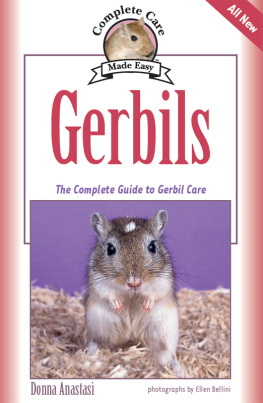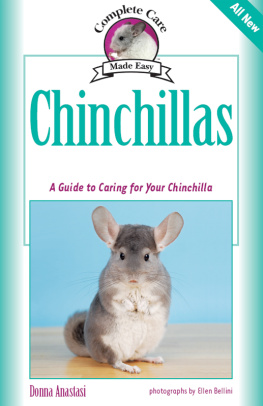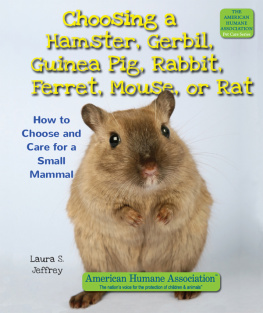Donna Anastasi - Gerbils: The Complete Guide to Gerbil Care
Here you can read online Donna Anastasi - Gerbils: The Complete Guide to Gerbil Care full text of the book (entire story) in english for free. Download pdf and epub, get meaning, cover and reviews about this ebook. year: 2011, publisher: CompanionHouse Books, genre: Home and family. Description of the work, (preface) as well as reviews are available. Best literature library LitArk.com created for fans of good reading and offers a wide selection of genres:
Romance novel
Science fiction
Adventure
Detective
Science
History
Home and family
Prose
Art
Politics
Computer
Non-fiction
Religion
Business
Children
Humor
Choose a favorite category and find really read worthwhile books. Enjoy immersion in the world of imagination, feel the emotions of the characters or learn something new for yourself, make an fascinating discovery.
- Book:Gerbils: The Complete Guide to Gerbil Care
- Author:
- Publisher:CompanionHouse Books
- Genre:
- Year:2011
- Rating:3 / 5
- Favourites:Add to favourites
- Your mark:
Gerbils: The Complete Guide to Gerbil Care: summary, description and annotation
We offer to read an annotation, description, summary or preface (depends on what the author of the book "Gerbils: The Complete Guide to Gerbil Care" wrote himself). If you haven't found the necessary information about the book — write in the comments, we will try to find it.
Who doesnt wish to share his or her home with a cage full of Furry Mongolian Friends aka gerbils!? Author Susan Anastasi certain does! She describes these irresistible critters as quiet, clean, friendly, curious, active, and easy-to-please. In deciding whether the gerbil is for you, Anastasi offers this advice: If you are looking for a seemingly limitless cache of cutenessfrom their long, fanning whiskers and large almond-shaped eyes to heir bunnylike hind legs and tufted tail tipsthen gerbils are for you! Clearly bitten by the gerbil bug, the author begins by providing some basic natural history about gerbils, their origins on the Mongolian range, and an overview of their behaviors. Anastasi defends her favorite pocket pet and asserts that the gentle gerbil does not deserve its Latin name (Meriones ungiculatus), which translates as clawed warrior. Filled with terrific color photographs, Gerbils summarizes the basic needs of these adorable rodents, specifically addressing their housing requirements, the cost and commitment involved, and their interactions with children and other pets. The following are devoted to purchasing a healthy gerbil from a pet shop, hobby breeder, or shelter; introducing the gerbil to the home; housing and feeding; taming and handling the pet gerbil; health considerations and potential household hazards; breeding and raising the young; and exhibiting gerbils at shows.
The discussion on housing covers the selection of the ideal enclosure, basic housing setup, accessories, safety, and a guide to cleaning the tank. The chapter Taming and Handling Your Gerbils offers a step-by-step socialization process to acclimate the gerbil to its new handler and surroundings plus instructions for handling the gerbil and discouraging nipping. All keepers will be interested in the chapter on keeping gerbils healthy through smart preventative care; topics covered include allergies; broken limbs and head injury; teeth, tail, and ear problems; dehydration; diarrhea; heat stroke; hypothermia; mites, and more. Gerbil enthusiasts who are looking to become gerbil midwives will find complete instructions for breeding and raising pups (baby gerbils) in the chapter about reproduction. It covers planning a litter, setting up a breeding tank, mating, caring for the pregnant mom, birthing, fostering, growth cycles, weaning, handling pups, and more. The chapter Fun with Gerbils offers ideas for games, art projects, photographing, and training gerbils to do seven fun tricks. Resources include lists of publications, clubs, organizations, and websites. Glossary of terms and index included.
Donna Anastasi: author's other books
Who wrote Gerbils: The Complete Guide to Gerbil Care? Find out the surname, the name of the author of the book and a list of all author's works by series.
















